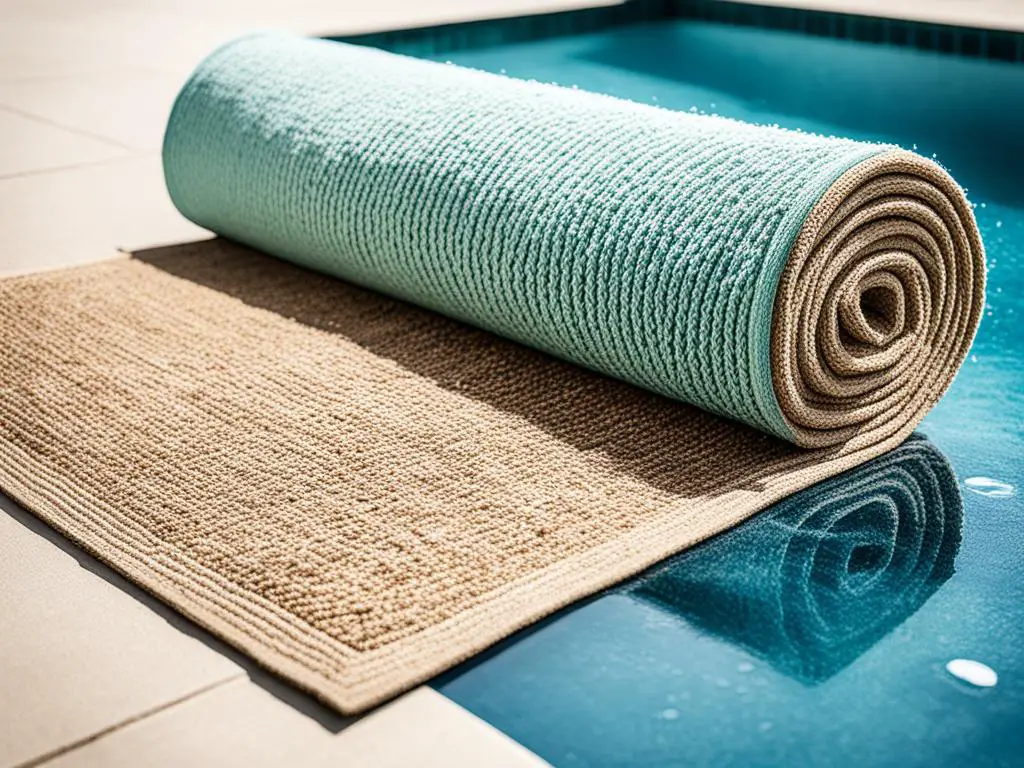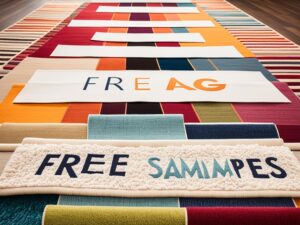Jute rugs are a popular choice for adding natural, rustic charm to any space. However, when it comes to water exposure, jute rugs require special consideration. Jute rugs are made from natural jute fibers, which are highly absorbent and delicate. To maintain the beauty and longevity of your jute rug, it is important to understand how water can affect it and take the necessary precautions.
Key Takeaways:
- Jute rugs are susceptible to moisture, and it is best to keep them dry to avoid warping, staining, and damage.
- If a jute rug gets wet, it should be dried quickly by blotting, using a dry cleaning solution, and blow drying on a low, cool setting.
- Regular maintenance and cleaning are essential to prolong the lifespan and beauty of jute rugs.
- Avoid placing jute rugs in wet or humid spaces and keep them away from areas prone to spills.
- Consider the limitations of jute rugs when choosing their placement in your home.
How are Jute Rugs Made?
Jute rugs, renowned for their durability and softness, are crafted using an intricate manufacturing process that starts with the extraction of all-natural jute fibers from jute plants.
Jute Fiber Extraction
To obtain the raw materials for jute rugs, jute plants are grown in countries like Bangladesh and India, where they thrive in wet and humid conditions. Once the plants reach maturity, they undergo a process called retting. This involves submerging the harvested plants in water for several weeks to soften the fibers.
Jute Plant Growth
Jute plants require specific environmental conditions to grow successfully. They thrive in areas with high humidity and a temperature range of 20-40°C (68-104°F). The plants can reach a height of up to 3-4 meters (9-13 feet) within 100-120 days of sowing the seeds.
Jute Rug Construction
After the jute fibers are extracted, the bark is stripped and dried to create the raw jute fibers. These fibers are then hand-woven by skilled artisans to create various products, including jute rugs. The weaving process involves carefully interlacing the fibers to form a strong and durable rug.
The natural composition of jute fibers gives the rugs their characteristic softness, making them a popular choice for households seeking a natural and comfortable flooring option.
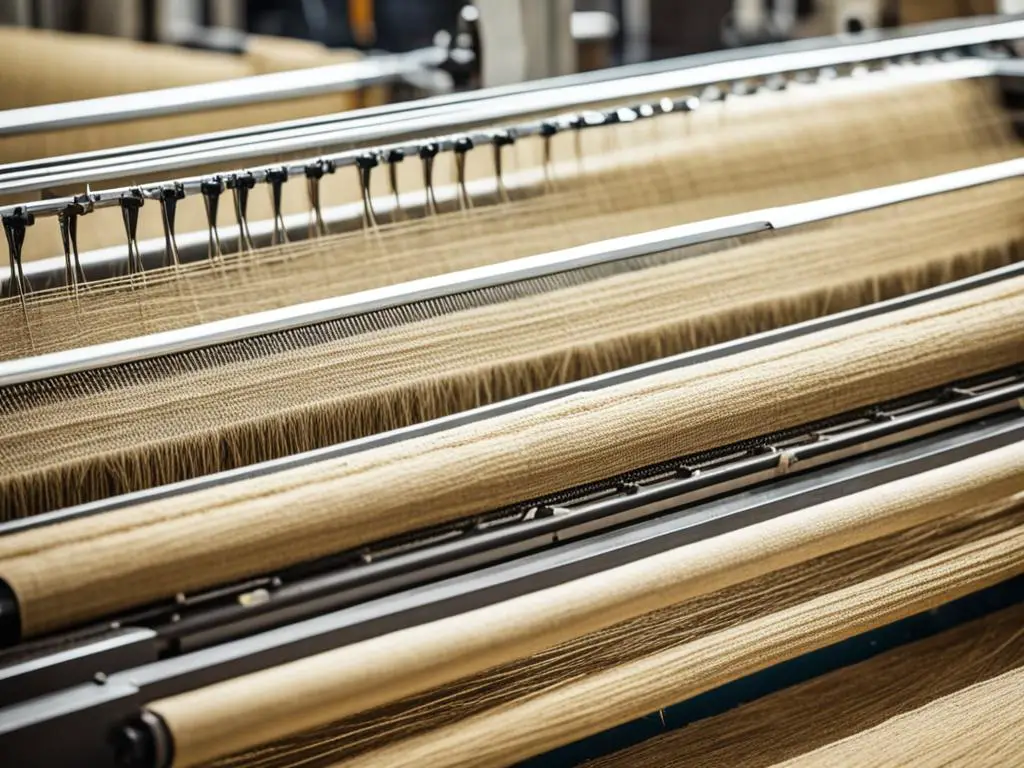
A jute rug being hand-woven, representing the intricate craftsmanship involved in the manufacturing process.
What Happens if a Jute Rug Gets Wet?
Jute rugs are known for their natural fibers, but they are not invincible when it comes to water exposure. When a jute rug gets wet, it can lead to various effects and potential damage. Understanding the consequences of water on jute rugs is crucial for their proper care and maintenance.
EFFECTS OF WATER ON JUTE RUGS
When jute fibers come into contact with water, they become vulnerable to mold and mildew growth. The natural properties of jute make it highly absorbent, which means that water can get trapped within the fibers. As a result, the rug becomes a breeding ground for mold and mildew, which can compromise its structural integrity.
In addition to mold and mildew, water can also cause staining on jute rugs. The moisture can release oils present in the jute fibers, causing the rug to develop unsightly brown stains. These stains can be difficult to remove and may permanently affect the appearance of the rug.
JUTE RUG WATER DAMAGE
Water damage can have long-lasting effects on jute rugs. The excess moisture weakens the fibers, making them more prone to breakage and deterioration. Over time, this can result in irreversible damage to the rug, causing it to lose its shape, texture, and overall quality.
MOLD AND MILDEW ON JUTE RUGS
One of the most concerning consequences of water exposure on jute rugs is the growth of mold and mildew. These microorganisms thrive in damp environments, and a wet jute rug provides the perfect conditions for their development. Mold and mildew not only damage the rug but also pose potential health risks, especially for individuals with allergies or respiratory conditions.
STAINING OF JUTE RUGS
Staining is a common issue when jute rugs get wet. The oils released from the fibers can penetrate the rug’s surface, leaving behind visible stains. These stains can be particularly challenging to remove, requiring specialized cleaning techniques and products.
To prevent water damage and staining, it is crucial to avoid placing jute rugs in wet or humid areas. It is also advisable to keep them away from spaces prone to spills, such as kitchens or dining areas. Taking these precautions can significantly prolong the lifespan and beauty of your jute rug.
Proper Care for Wet Jute Rugs
If your jute rug does get wet, it is important to address the issue promptly to minimize damage. Here are some steps to follow:
- Blot the affected area: Use a clean, dry cloth or paper towel to absorb as much moisture as possible. Avoid rubbing or scrubbing, as this can further embed the water into the fibers.
- Dry the rug: Place the rug in a well-ventilated area with good air circulation. You can also use fans or open windows to enhance airflow. Avoid exposing the rug to direct sunlight, as this can cause discoloration.
- Use a dry cleaning solution: If the rug shows signs of staining or odor, you can use a dry cleaning solution specifically formulated for jute rugs. Follow the manufacturer’s instructions and test the solution on a small, inconspicuous area first.
- Blow-dry on a low, cool setting: If the rug is not drying quickly enough, you can use a blow dryer on a low heat and cool setting. Keep the dryer at a safe distance to avoid overheating the rug.
By following these steps, you can help mitigate the effects of water on your jute rug and prevent further damage. Remember that it is always best to consult a professional rug cleaner if you are uncertain about the appropriate cleaning methods.
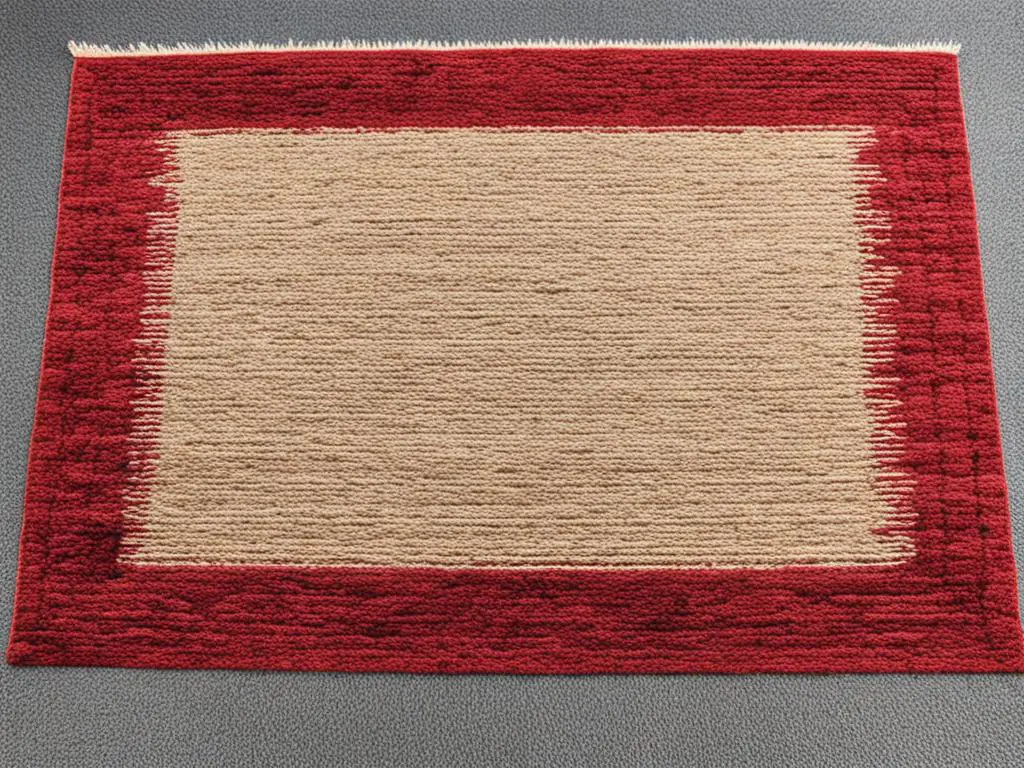
How to Clean and Maintain Jute Rugs
Jute rugs are known for their low maintenance and natural beauty. To keep your jute rug looking its best, regular cleaning and proper maintenance are essential. Here are some jute rug cleaning tips and maintenance guidelines to help you preserve the quality and longevity of your rug:
Vacuuming Jute Rugs
Vacuuming jute rugs at least once a week is crucial for removing surface dirt and preventing it from settling deep into the fibers. Use a brush attachment or a vacuum cleaner with a brush setting to gently vacuum your jute rug. Avoid using a beater bar or a high suction setting, as it can damage the natural fibers.
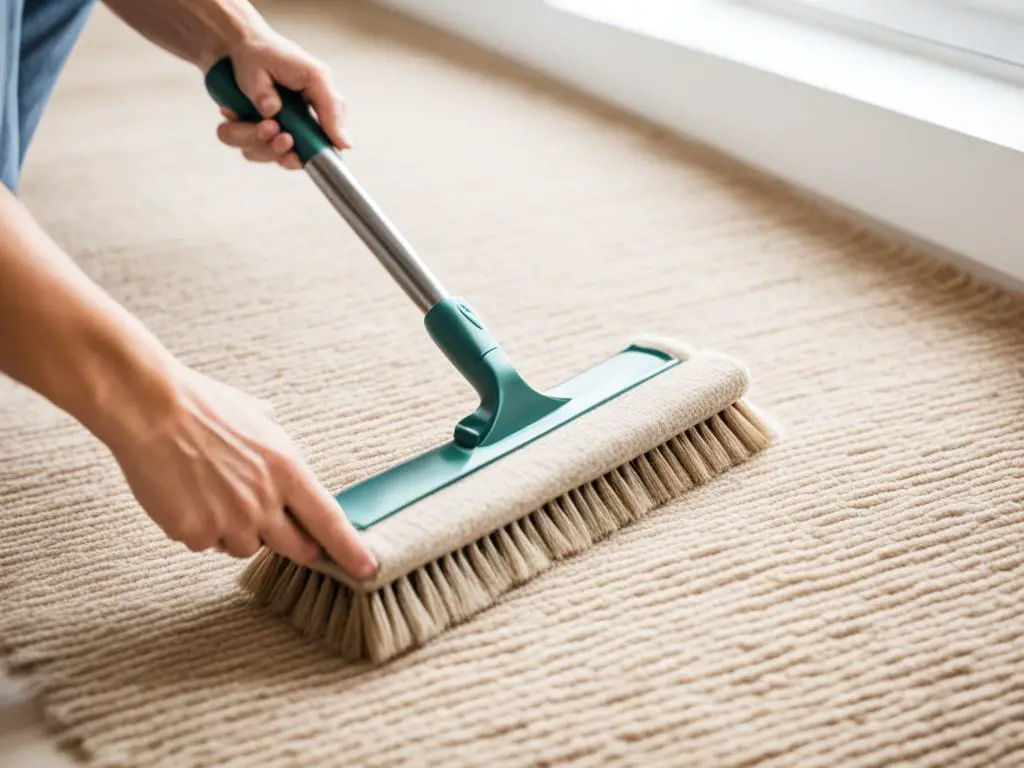
Spot Cleaning Jute Rugs
Accidents happen, and when spills or stains occur on your jute rug, it’s important to act quickly. Blot the affected area immediately with a dry cloth or paper towel to absorb as much liquid as possible. Avoid rubbing or scrubbing, as it can spread the stain and damage the fibers. For stubborn stains, gently brush the affected area with a soft-bristle brush or use a dry cleaning solution like bicarbonate soda. Test the solution on a small, inconspicuous area first to ensure it doesn’t discolor or damage the rug.
Drying Jute Rugs
If your jute rug gets wet during cleaning or due to spills, it’s crucial to dry it as quickly as possible. Excess moisture can lead to mold, mildew, and damage to the fibers. Gently blot the wet area with a dry cloth or towel to absorb as much moisture as possible. Avoid using water for cleaning jute rugs, but if necessary, use a small amount of water and mild detergent. After cleaning, ensure thorough drying by placing the rug in a well-ventilated area away from direct sunlight. This helps prevent discoloration and ensures the jute fibers remain intact and durable.
By following these jute rug cleaning tips and maintenance guidelines, you can enjoy the natural beauty and longevity of your jute rug for years to come.
Can Jute Rugs Be Used Outdoors?
Jute rugs are a popular choice for indoor spaces due to their natural and timeless look. However, when it comes to outdoor use, jute rugs are not recommended. These rugs are highly susceptible to water damage, which can result in staining, mold growth, and mildew accumulation. Exposure to rain or other moisture sources can lead to irreversible damage and deterioration of the jute fibers, compromising the rug’s overall quality and appearance.
For outdoor areas that require rugs, it is advisable to choose materials specifically designed for outdoor use. Outdoor rugs are made with water-resistant and weather-resistant properties, ensuring their durability and longevity in outdoor environments. Materials such as polypropylene, nylon, and synthetic fibers provide excellent water resistance, making them suitable for outdoor spaces that are exposed to the elements.
While jute rugs may not be ideal for outdoor use, they can thrive in well-maintained and dry indoor spaces. These rugs are best suited for areas with low foot traffic, where they can remain free from moisture and spills. Regular vacuuming and spot cleaning are essential to keep jute rugs looking their best indoors, ensuring their longevity and preserving their natural beauty.
In summary, jute rugs are not suitable for outdoor use and should be reserved for indoor spaces. When choosing rugs for outdoor areas, it’s important to prioritize water resistance and durability, opting for materials specifically designed for outdoor use. By selecting the right rug for each space, you can ensure its longevity and maintain its aesthetic appeal for years to come.
Are Jute Rugs Environmentally Friendly?
Jute rugs are a popular choice for eco-conscious individuals due to their environmentally friendly properties. Made from the sustainable and renewable resource of jute fibers, these rugs have minimal impact on the planet compared to synthetic alternatives.
Jute, often referred to as the “golden fiber,” is derived from the jute plant, which grows quickly and abundantly in regions like Bangladesh and India. This fast growth rate makes jute a highly sustainable crop that can be harvested multiple times a year, reducing the need for additional land usage.
One of the key advantages of jute as a renewable resource is its minimal requirement for fertilizers and pesticides. Unlike other crops, jute is naturally resistant to pests and diseases, making it a low-maintenance and eco-friendly choice. By opting for jute rugs, consumers can contribute to reducing the use of harmful chemicals in the environment.
Furthermore, jute fibers are fully biodegradable and compostable. When jute rugs reach the end of their life cycle, they can decompose naturally without leaving behind any toxic substances or polluting the soil. This aspect of jute’s biodegradability highlights its commitment to sustainability and its compatibility with a circular economy.
“Jute rugs are not only a stylish and versatile choice for interior design, but they also embody a commitment to preserving our planet’s resources.”
In addition to their eco-friendly nature, jute rugs also offer a range of benefits for homeowners. Their natural fibers provide a soft and comfortable texture that enhances the overall comfort of a living space. Jute rugs are also hypoallergenic, making them an ideal choice for individuals with allergies or sensitivities.
By opting for jute rugs, consumers can make a conscious choice to support sustainability and contribute to maintaining a natural and healthy home environment. The eco-friendly nature of jute rugs aligns with the growing demand for sustainable and ethically sourced products in the home decor market.
Conclusion
In conclusion, while jute rugs can get wet, it is best to minimize water exposure to prevent damage and staining. The moisture resistance of jute rugs is limited, and they are susceptible to mold, mildew, and discoloration when subjected to moisture. However, if your jute rug does get wet, there are measures you can take to mitigate the damage.
Caring for jute rugs involves prompt action when they come into contact with water. Begin by blotting the affected area with a dry cloth to remove as much moisture as possible. Then, apply a dry cleaning solution like bicarbonate soda to treat any stains. Avoid using excessive water, as it can exacerbate the staining and damage.
To dry a wet jute rug, use a blow dryer on a low, cool setting to avoid heat damage. Ensure the rug is completely dry before returning it to its designated area to prevent the growth of mold and mildew. Regular maintenance, including vacuuming and spot cleaning, can help preserve the lifespan and appearance of your jute rug.
While jute rugs offer a natural and timeless aesthetic to your home, it is important to consider their moisture sensitivity and suitability for specific areas. It is best to avoid placing jute rugs in wet or humid spaces and to keep them away from areas prone to spills. By understanding and implementing proper care and maintenance, you can enjoy the beauty of your jute rug for years to come.
